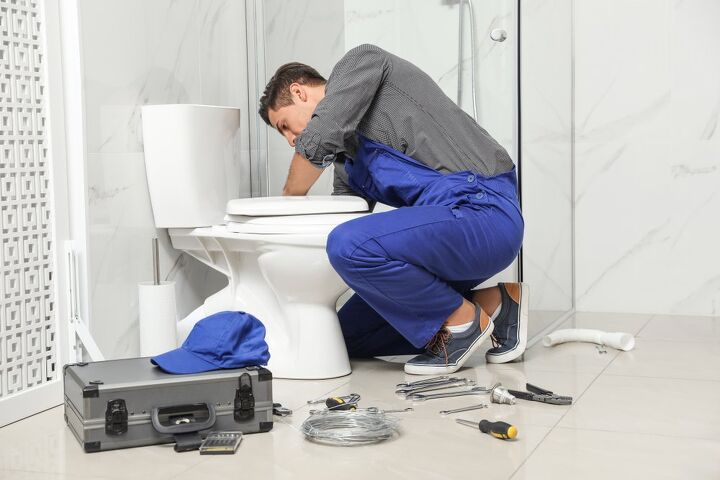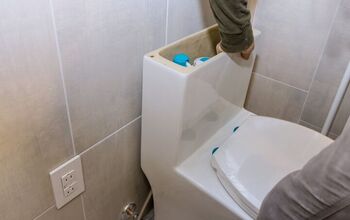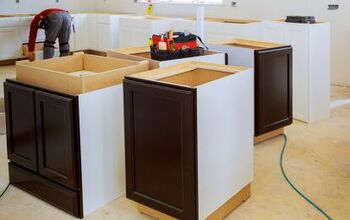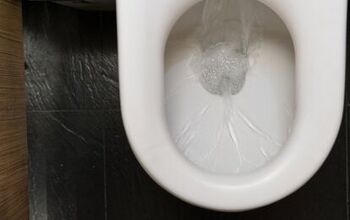How Long Does It Take To Install a Toilet? (Find Out Now!)

Toilet flushing accounts for a huge percent of a homeowner’s water bill. This in part explains why toilet installation is important. Toilet installation can be done by yourself or by hiring a professional, and often toilet installation only takes a few hours!
To install a toilet, one must first measure all relevant spaces to ensure the toilet will fit correctly. The next step is finding an acceptable toilet. Then, once you’re ready, you must remove the old toilet by detaching the tank from the bowl. You should also replace the wax ring and the flange. Install the new toilet, check its seat, and finally check for leaks.
Do You Need to Install or Repair a Toilet?
Get free, zero-commitment quotes from pro contractors near you.

Preliminary Steps
Tools Required
The tools necessary for toilet installation are listed below. You may need more tools depending on your specific requirements.
- Screwdriver
- Adjustable wrench
- Rag & bucket
- Plunger
- Utility knife
- Hacksaw
Safety equipment like gloves, masks, and clothes you don’t mind getting wet or dirty should also be used.
Measuring
Measuring is one of the most important installation steps. Measure the distance between the wall your toilet rests up against and the bolts that anchor the toilet to the floor. You should also measure the nearby water supply line.
A toilet that’s larger than normal will not rest comfortably next to the water supply line, and a toilet that’s wider than normal at the base will be harder to fit inside the bathroom.
The shape of the toilet bowl also matters, as this will determine how you sit. Toilet bowls which are especially round will need a cover that is rounder. Measure and see which kind of seat is appropriate.
Choosing the Right Toilet
Toilet seats come in a range of sizes. The majority of individuals find long toilet seats to be the most comfortable, but smaller bathrooms may not allow for these. Bathrooms which cannot house a standard-size toilet will benefit from using a toilet seat that’s rounded.
A lot of individuals view toilet height as important, and some toilets can be 19 inches tall. Tall toilets such as these are generally known as comfort height toilets. Comfort height toilets are most beneficial for those who have physical limitations, as these are easier on the knees and joints.
Comfort height toilets, however, can be more difficult for children or individuals who are shorter than average. If your legs dangle and don’t reach the floor, this is a sign that the toilet is too tall. The best thing to do in this situation is to try sitting on the toilet before purchasing one.
Replacing the Toilet Flange
This step won’t always be necessary. The toilet flange connects the toilet bowl to the floor. A flange can crack or break, but usually these last several years before replacement is needed. If the flange is repairable, you can purchase a flange repair kit and fix it DIY.
Tip: The flange needs to be higher than the surface of the floor.
Removing the Old Toilet
Toilets are pretty heavy, so the tank should be removed first. The bowl can be removed afterwards.
Cut Off the Water
Turn off the water supply. There will be a valve located either on the back wall or on the floor beside the toilet.
Flush the toilet. This will drain the water from both the tank and the toilet bowl. A plunger can be used to force any remaining water down the drain while a sponge will work best for absorbing leftover water in the tank.
Disconnect the Supply Line
The average wrench can be used to disconnect the water supply line from the tank. If the supply line does not disconnect easily, use a standard lubricant to overpower the corrosion.
A bucket will need to be placed underneath the tank to catch any water which falls from either the tank or the supply line. A rag will also be useful here.
Removing the Tank
If you’re installing a new toilet alone, you’ll want to separate the tank from the bowl first. If working with another person, you may lift the separate pieces together. Coverings should be worn on the hands so you’re protected from any debris. After unscrewing the bolts from the bottom of the tank, separate the tank.
Removing the Bowl
Next, remove the bolts from the bottom of the toilet bowl. If the bolts are rusted, lubricant may be used to help loosen them. Any caulk remaining around the base of the toilet bowl can be cut through with a knife.
When lifting the toilet bowl, be wary of stray water which may spill from the sides. Use the rag to clean any spills.
The Wax Ring
You’ll need to remove the wax ring, as this is not reusable. An old wax ring can be removed with a knife.
Block off the hole by using a rag or something similar to keep anything from falling into the drain. Use the knife to get rid of any extra wax that’s on the top of the drainpipe. Then, place the new wax ring before lowering a new toilet bowl onto it.
A toilet can also be installed with a waxless ring, and this is easier to install. Waxless rings are also harder to damage during the installation process.
After lowering the toilet onto the floor, carefully sit on the toilet. This will squish the wax ring and allow for better adhesion. If you have flooring that is thicker than usual, there are thick wax rings available.
Tip: Purchasing a backup wax ring is a good idea if you’re doing a DIY installation; this way you’ll have another ring handy if you mess up with the first one.
Installing the New Toilet
The Bowl
Begin by installing the bolts on the flange. The bolts may come with washers and cap bases to hold them in place. Tighten the washers as much as possible so the new toilet aligns easily.
When installing the bolts, alternate sides until every bolt is firmly in place. This will keep the bowl even. If you over-tighten the bolts, you might crack the bowl.
Tip: Lowering the toilet bowl straight onto the flange will help prevent the wax ring from getting damaged.
Caulking
There is some debate about whether or not individuals should caulk their toilets. Those in favor of caulking say that caulking is good for anchoring the toilet. Caulk also helps with preventing foul odors. As for leaks, caulk will stop outside water from entering beneath the toilet.
Others believe that removing caulk often damages the floor and toilet, and therefore it should not be installed in the first place. They say caulking the toilet when it’s new will trap excess moisture from the toilet itself underneath, and this will make detecting leaks harder.
Those installing new toilets will want to look at local plumbing codes and account for the standards of future home inspectors before going through with an installation.
The Tank
Place the toilet tank on top of the bowl, keeping the bowl aligned with the bolts. A hacksaw should be used to cut bolts that are too long.
While securing these bolts, alternate sides to make sure that the toilet bowl is level. The tank-to-bowl gasket should be installed here as well. Now you can reattach the water supply line to the valve at the bottom of the tank.
The Seat
Lower the toilet seat onto the toilet bowl. Secure the seat in place by hand or with a screwdriver.
Testing for Leaks
The water can be turned on now, but do so slowly. Leaks may spring from the supply line and valves. The majority of leaks can be fixed by bolt tightening. Once again, if the bolts are too tight, the pressure will crack the porcelain.
Conduct a second test by flushing the new toilet. Now flush several times. If a leak is springing at the toilet’s base, it may be because the wax ring is damaged or loose.
If the wax ring is compromised, the toilet will need to be removed altogether so a new wax ring can be installed.
Keep in mind that dyes which detect leaks can be purchased to make leaks more visible. These are sold in hardware stores and online.
Do You Need to Install or Repair a Toilet?
Get free, zero-commitment quotes from pro contractors near you.

Related Questions
Can I use the new toilet right after installation?
If the toilet was caulked, it’s best to wait six to twelve hours. If the toilet was only bolted down, you may use it immediately. For the best results, wait a few hours and don’t rock the new toilet while using it.
How much does it cost to install a new toilet?
In general, toilet installation costs about $170, though the price of installation can be a lot higher if you’re using special materials and components. Installing the toilet yourself will significantly lower the cost, as you won’t have to pay for professional labor. However, most DIYers don’t have the skills possessed by professional plumbers.
How long does the average toilet last?
Toilets generally last up to 25 years, although porcelain toilets can last much longer. If you want your newly installed toilet to last a long time, you must take care of it. Keep up with maintenance and don’t misuse the toilet!

Matt loves everything DIY. He has been learning and practicing different trades since he was a kid, and he's often the first one called when a friend or family member needs a helping hand at home. Matt loves to work with wood and stone, and landscaping is by far his most favorite pastime.
More by Matthew Mountain



























